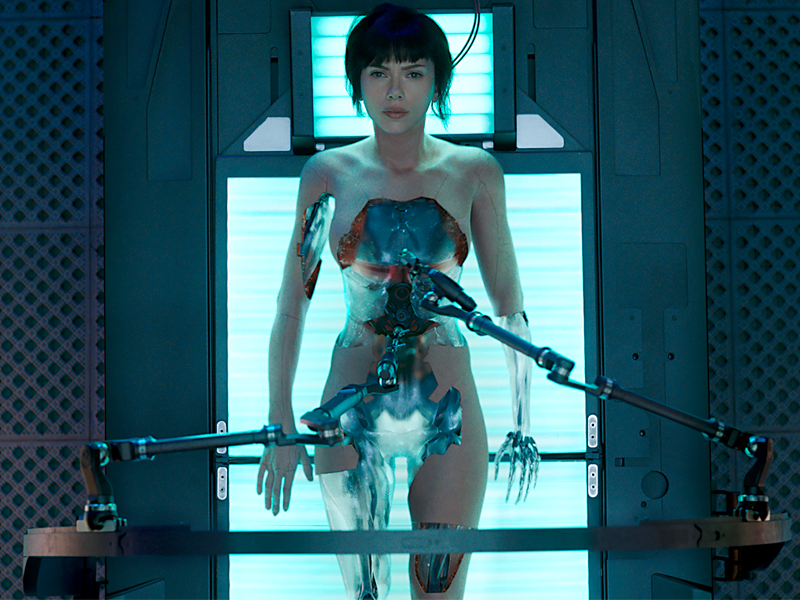Is this spring blockbuster a major case of cultural appropriation, or simply savvy casting?
Amid the gunfire, the shadowy conspiracies, and the musings about the nature of minds – artificial and otherwise – there’s another conflict that’s been waged on screen and behind the camera of the upcoming blockbuster, Ghost in the Shell. It’s one that pits the Hollywood machine, with a history of simplifying contexts and erasing ethnicity in pursuit of global appeal and good-return-on-investment box office numbers, against phalanxes of online and online critics, who have pilloried the film because of what they see has been lost in the translation from manga and anime to live action.
The brightest flashpoint is Motoko Kusanagi, a character with a decidedly Japanese name who is being portrayed by Scarlett Johansson – who is decidedly not a Japanese (or Asian) actress. Known in the film as The Major, she’s an android who is a key member of Section 9, a government intelligence agency tasked with battling cyberterrorism. The choice of her casting, on the other hand, has been battling claims of whitewashing, and those connected to the film, including the director of the original anime, Mamoru Oshii, have responded to the criticism with everything from praise for Johansson’s performance to the argument that Kusanagi wasn’t meant to be Japanese in the first place.
With the film’s world premiere having taken place on March 16, and the Japan release scheduled for April 7, here’s what some of the most prominent voices* regarding the film have to say about the controversy, as well as the making of the movie in general.
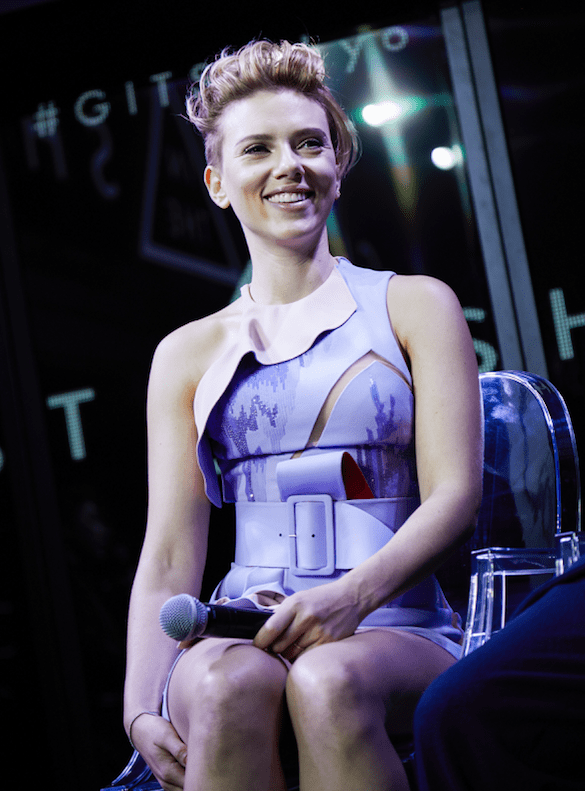
Scarlett Johansson at the Ghost in the Shell Fan Event in Tokyo
Scarlett Johansson On…
…her first reaction to Ghost in the Shell
I didn’t know the material, and when the script came to me, it also came with a copy of the anime, and when I first saw it, it seemed quite daunting … but it was alluring.
…what drew her to The Major
I started to imagine that this was a character who was living a unique experience of somebody who has an idea of who she thought she was, and then who she isn’t now – the life she’s living now. And then the person she feels she is, this sort of gnawing and clawing feeling she has in her ghost. And being able to play these three sides – we called them the ego and the superego and the id – that was pretty enticing for me.
…her physical preparation for the film
Of course I did a lot of training because I wanted to be able to have the physical presence of somebody who’s very capable, and then of course I had to be quite capable. Luckily I’d had a lot of fight training and weapons training for all those little Marvel movies. [laughs] So it comes in quite handy because there’s a kind of shared vocabulary.
…what she hopes the fans take away
It’s a story about the loss of innocence, and kind of rebirth that you can have from that. And I hope that the fans can connect with The Major in the way that I connected with her.
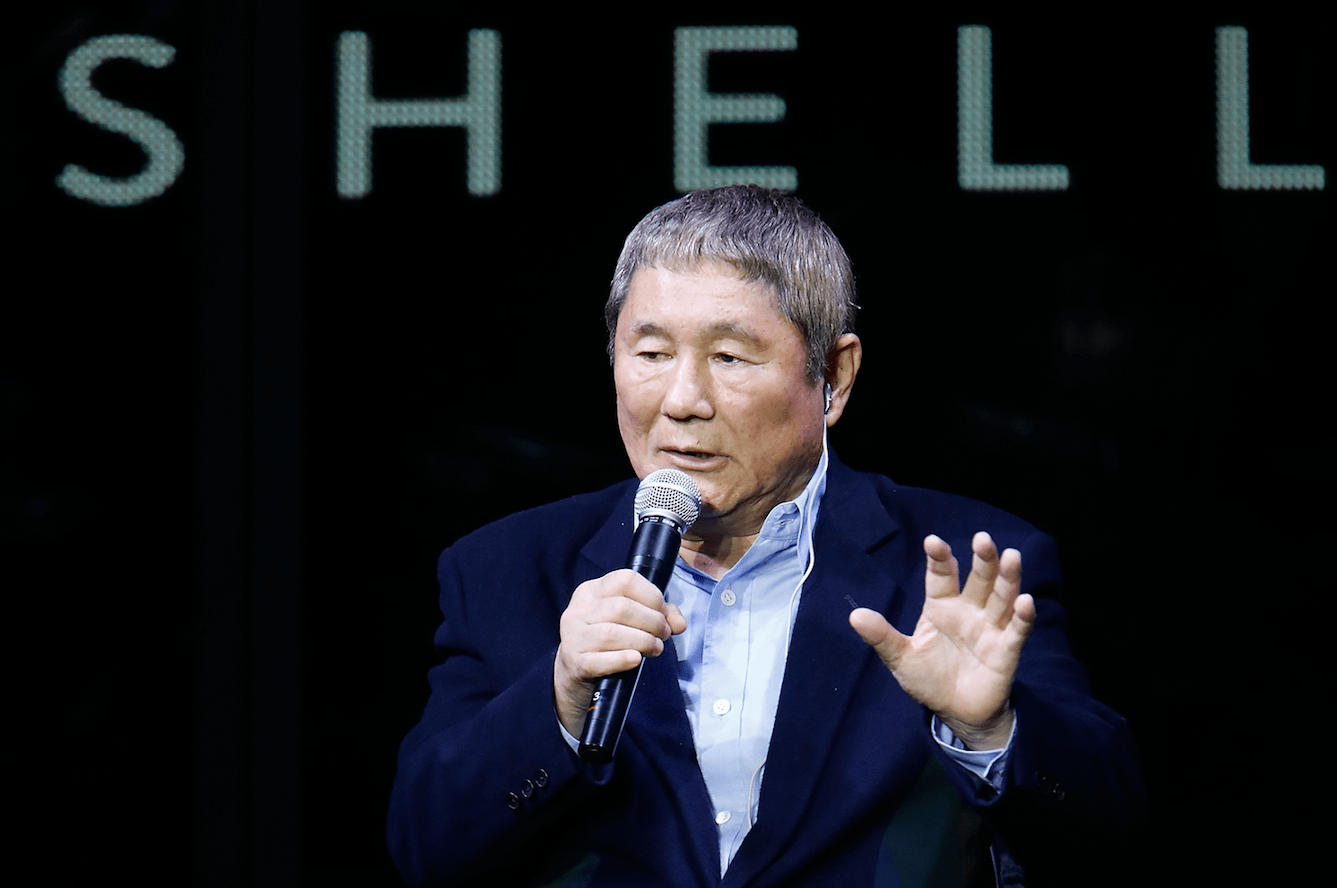
Kitano “Beat” Takeshi at Ghost in the Shell’s global trailer launch in Tokyo. Image: Tomohiro Ohsumi/Getty Images
Screen Legend Kitano “Beat” Takeshi, Who Plays the Character of Aramaki in the Film, On…
…speaking Japanese in a mostly English language film, and the lengths that the cast and crew would go to cater to his needs
I said I hated speaking English, so they told me that Japanese was fine; I said I was terrible at remembering lines and made all kinds of other complaints. Finally, they had Scarlett Johansson holding my cue cards for me! [laughs]
…how right Johansson was for the role
Scarlett as an actress has 20 years of experience, and she has the perfect look for a character who is fitting into the cyberpunk world. Even if you look at her toughness and her figure, she’s impressive, and she’s right on with her ability to represent the kind of nuances of an android with human thoughts. She has truly embodied those central questions of her character: “Who am I?” “Am I good or evil?”
…what it took to bring him on board
I initially thought that it would be impossible for me to play the character of Aramaki. But [director Rupert Sanders] pursued me around the world, and finally explained to me that we would be presenting this work that had its origins on the island of Japan, and how our whole team would be fighting together like comrades in arms to do this project justice.
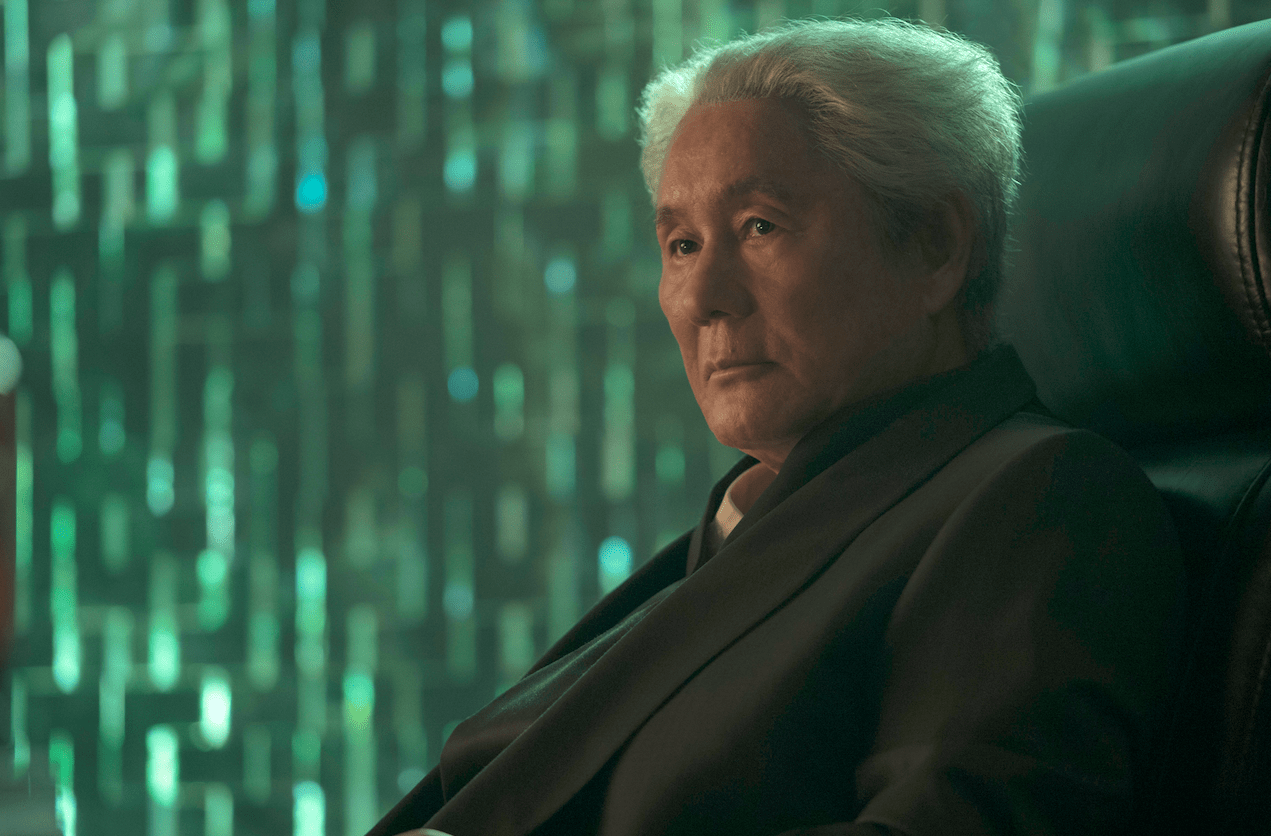
Kitano “Beat” Takeshi in a scene from the movie. Image: Paramount Pictures
Emily Yoshida, Film and Anime Critic, On…
…her initial reaction to seeing a movie still of Johansson as The Major
The image of a famous white actress in Kusanagi’s signature black bob seemed like another depressing example of Asian actors being removed from Asian narratives.
…the ambiguous ethnicity of advanced androids
I don’t think it’s an accident that the cyborgs of Ghost in the Shell, including Motoko, are more “anime-looking” than the characters who are mere Japanese or American humans. This is not to say that they are supposed to be white, but they are not explicitly Japanese, either. They’re a supposed sign of progress in a blindly technologized future, where not only can an individual’s race be augmented away; one’s entire physical being can be.
…why Japanese viewers may have an entirely different take on the subject of whitewashing
Japanese audiences, unlike American audiences, don’t understand Motoko to be a Japanese character, just because she speaks Japanese and has a Japanese name. This speaks to the racial mystery zone that so much anime exists in, allowing viewers to ignore such unpleasant dynamics as oppression and discrimination even as they enjoy stories that are often direct responses to those dynamics.
…her doubts about letting Hollywood have a go at a very complicated set of cross-cultural touchstones
Ghost in the Shell is the product of and response to decades of physical erasure and technological alienation. It’s pop cultural fallout, a delicately layered croissant of appropriation upon appropriation. It’s as timely as ever, but it feels wildly inappropriate for an American studio and the British director of Snow White and the Huntsman to pick it up and sell it back to us.
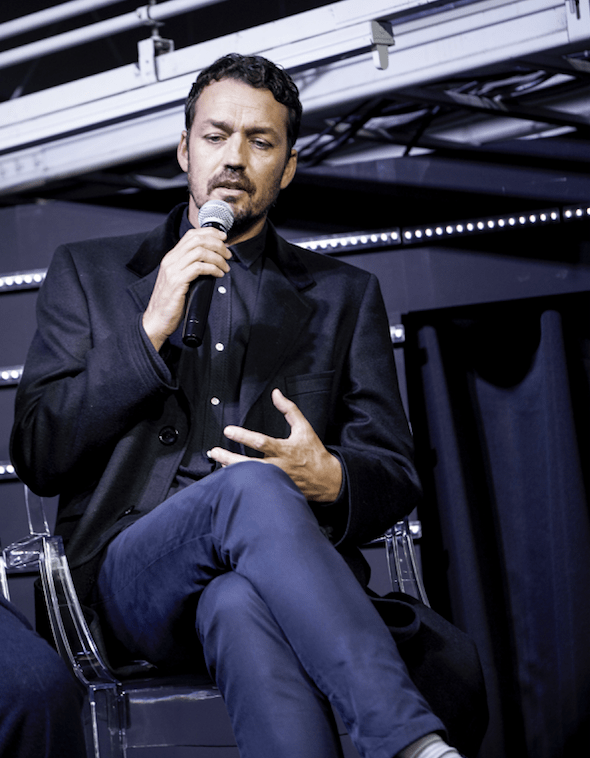
Director Rupert Sanders at the Ghost in the Shell Fan Event in Tokyo
Director Rupert Sanders On…
…why Johansson was The One, and the difference between actors and movie stars
You know, you want to take Ghost in the Shell to the world, and I think she is such an incredible actor that she’s grown to such a global appeal, and I think to me, that’s really what is so impressive about her as an actor. She’s transcended so many of those levels, she’s been doing it for 20 years and along those 20 years she’s made incredibly intelligent choices and made some really seminal films, especially around this topic, from Her to Lucy to Under the Skin. I mean, you work with actors and then you work with movie stars. Actors are incredible, but there’s something that movie stars have – and there’s very few of them. For me, I stand by my decision: she’s the best actress of her generation, and I was flattered and honored that she would be in this film.
…why the criticism doesn’t bother him, and why he thinks the proof will be in the viewing
I think any criticism hasn’t really come from Japan. I think [original anime director Mamoru] Oshii very categorically came out and enforced her as The Major, but to me, that’s not going to silence the critics, because nothing really silences critics … I hope the conversation changes into what the film does do and how different it is from what people were expecting. She really can speak for herself ultimately in the film, and I think people will judge her and say, “Yeah, she was totally the right decision.”
* We heard from Johansson, Sanders, and Kitano at a press event in Tokyo, and Emily Yoshida’s remarks come from her 2016 article on Verge.com.
Main image: Paramount Pictures
This article appears in the April 2017 issue of Tokyo Weekender magazine.
Updated On April 26, 2021

